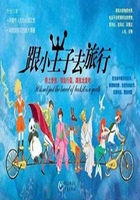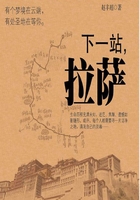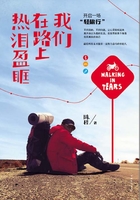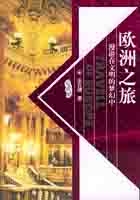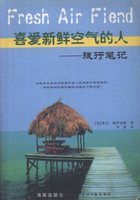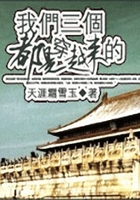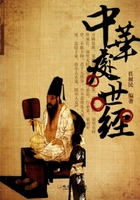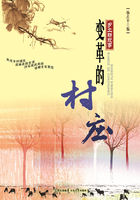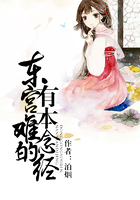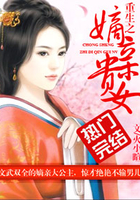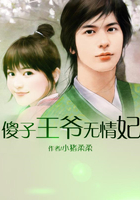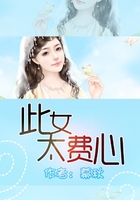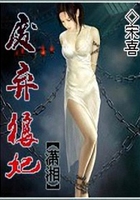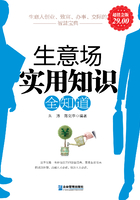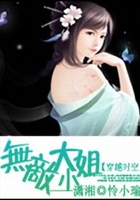Would you please introduce some poems written by Su Dongpo on wine drinking?
Su Dongpo (苏东坡) , who is also known as Su Shi (苏轼), was the leading poet of the Northern Song Dynasty. Some lines in his ci-poems are cited below:
How fair are the lakes and hills of the southern land,Its plains spreading out like a golden strand!How often, wine-cup in hand, have you been here To make us linger drunk, though we appear?Written for Chen Xiang at the Scenic Hall(Tune:“The Beautiful Lady Yu”《虞美人》)
How long will the bright moon appear?Wine-cup in hand, I ask the sky.(Tune:“Prelude to the Melody of Water”《水调歌头》)
Notes:1)strand海滨;2)prelude前奏;3)melody歌曲
16.你能告诉我一些名酒的情况吗?
What are the characteristics of some famous wines
or liquors?
During national commodity fairs, experts judge the quality and taste of hundreds of alcoholic beverages and give awards to those they judge to be outstanding. Below are some alcoholic beverages, which are well-known across the country.
茅台酒 Maotai
Maotai Liquor has long been regarded as the No. 1 liquor in China, and one of the most famous liquors in the world, along with the Scottish Whisky, French Brandy and Russian Vodka. Maotai, being distilled in the town of Maotai near the Chishui River (赤水) in Guizhou Province, is older than the town itself. It has heavy fragrance and taste. At the Panama International Exposition of 1915, it won a gold medal for its excellent quality and unique flavor. At present, the Maotai Distillery combines traditional methods with advanced scientific processes to ensure that Maotai continues to enjoy its worldwide fame and recommendation.
泸州老窖特曲Luzhou Laojiao Tequ Liquor
Tequ (特曲) Liguor is the most prestigious liquor produced in Luzhou, Sichuan Province, followed by touqu (头曲) and erqu (二曲) liguors. The three alcoholic beverages are all made with a kind of yeast called daqu (大曲). Tequ is a home-brewed liquor that has a long tradition. The distillery was set up in the Ming Dynasty and has now lasted over 400 years. At the end of the Qing Dynasty, there were more than 300 households involved in the production of tequ. Traditionally solid-state yeast and the special longquan water (龙泉水) are used in the process. The water tastes slightly sweet, but is also a bit acidic. The liquor is commonly stored in cellars for many years before being blended into laojiao liquor. Laojiao tequ has a heavy fragrance, tastes mellow and is a bit sweet. After drinking, one feels refreshed and can enjoy a long aftertaste. In 1915, this product won a gold medal at the Panama International Exposition. At present, Luzhou Laojiao Tequ stands side by side with Maotai as an outstanding liquor.
五粮液 Wuliangye Liguor
This liquor is produced in Yibin, Sichuan Province. Wuliang means“five food grains”. The main five grains are good-quality rice, glutinous rice, sorghum, wheat and corn, but its original name was simply Grain Liquor. As early as in the Ming Dynasty, the Grain Liquor became famous in Sichuan. In 1915, it won a gold medal at the Panama International Exposition. In 1929, the name was replaced by wuliangye. In 1988, the distillery received both the product-quality certificate from the national government and the Quality-control Prize from the National Ministry of Commerce; and in 1991, the liquor was put on the list of Top Ten Chinese Liquors.
The liquor is a translucent beverage that has heavy fragrance. It tastes mellow, sweet and refreshing. Wuliangchun (五粮春), wuliangchun (五粮醇) and fruit wines are other products produced by the same distillery.
汾酒 Fenjiu Liquor
This liquor, being one of the most famous Chinese liquors, won a gold medal at the Panama International Exhibition in 1916. The high-quality of the liquor is due in great part to the natural water of wells located at the xinghuacun (杏花村, the Apricot Blossom Village) in Shanxi Province, particularly from a well-known as the Thousand-year-Well where the water tastes sweet and pure. The central Shanxi Plains abound in sorghum, moreover, which guarantees a good supply of the principal ingredient. Fenjiu Liquor looks clear and tastes soft and sweet. It may contain 38%, 48% or 53% alcohol, and it has light fragrance and taste.
郎酒 Langjiu Liquor
This liquor is produced in Gulin County, Sichuan Province. It is unique in Sichuan that it has the same heavy fragrance and taste of Maotai. By the end of the Qing Dynasty, a local distillery in Erlang (二郎) Town, Gulin County, produced a liquor called Huisha Langjiu Liquor (回沙郎酒) that gained considerable reputation in Sichuan and Guizhou. Erlang is only 70 km away from the birthplace of Maotai in Guizhou Pro-vince with the Chishui River (赤水) flowing between the two areas. Due to its nearness to the Maotai Distillery, Gulin uses the similar brewing-techniques. In addition its raw materials include top-quality sorghum and wheat. In 1984, at the annual National Wine Appraisal Conference, Gulin Langjiu Liquor won a gold medal and was put on the list of the Top Ten Chinese Liquors. At present, the distillery has developed a series of products to satisfy the needs of different consumers with alcoholic contents of 53%, 43%, 39%, 28%, and 25%.
绍兴黄酒 Shaoxing Yellow Wine
This wine takes its name from its color. It is made in Shaoxing City (绍兴), Zhejiang Province and is also called Shaoxing Rice Wine. As one of China’s eight traditional famous wines, it is made from high-quality glutinous rice and wheat, along with the pure water from the Jianhu Lake. It is noted not only for yellow color, but also for its mellow fragrance and good taste. It is said that its production in Shaoxing has a history of about 2,500 years. At present, Shaoxing wineries there produce 250,000 tons of the Yellow Wine per year, and their products include Jiafan Wine (加饭酒), Yuanhong Wine (元红酒), Shanniang Wine (善酿酒), Huadiao Wine (花雕酒) and Xiangxue Wine (香雪酒) as the leading producer and exporter of rice wine in China.
Notes:1)commodity商品;2)candidate候选人;3)whisky威士忌酒;4)vodka伏特加酒;5)distillery酿酒厂;6)re-commendation推荐;7)prestigious有名望的;8)acidic酸的;9)mellow芳醇的;10)exposition展览会;11)glutinous粘的;12)certificate证明书;13)refreshing清凉的;14)apricot杏;15)guarantee保证;16)considerable相当大的;17)appraisal评价;18)description描写;19)exporter出口商

